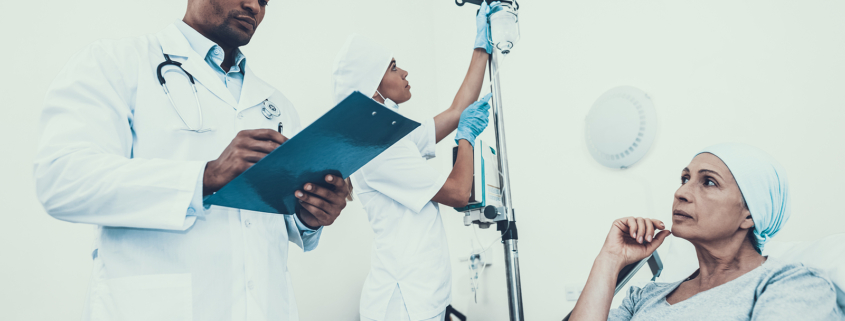‘Preventative Chemo’ Explained Amid Kate Middleton Diagnosis
The British Royal Family shocked the world recently by releasing a video statement from the Princess of Wales, Kate Middleton, revealing she had been diagnosed with cancer and was now undergoing a course of preventative chemotherapy.
While the 42-year-old did not specify what type of cancer she had, she explained it had been discovered following major surgery in January this year.
Despite the surgery being successful, tests found that cancer had been present in her body, and to eliminate any chance of it recurring she needed to receive cancer treatment.
Although many people who have themselves had a cancer diagnosis in the past might know what preventative chemotherapy is, for others, here is an explanation of this course of treatment.
Preventative chemotherapy explained
Preventative chemotherapy is not actually a medical term, and oncologists are most likely to refer to it as adjuvant chemotherapy instead. However, the Princess of Wales most likely used the former phrase as it is more self-explanatory.
Adjuvant chemotherapy involves using chemotherapy drugs to eradicate any of the remaining cancer cells that might still be in the body.
The surgeon, for instance, might not have successfully removed all of them when they extracted the tumour, or the cells might have spread to other parts of the body without yet being detected. For instance, sometimes tests fail to pick up on microscopic cancers, so it is better to be safe than sorry in these incidences.
It is, therefore, used to prevent the cancer returning, as the cytotoxic drugs can attack any remaining cells and destroy them, wherever they are in the body.
Preventative chemotherapy is not used in every case, but only when the medical team believes the risk of recurrence is high.
Doctors choose the best treatment path for each patient, whether that is chemotherapy, radiotherapy or another procedure, weighing up the risk and benefits of each action.
If they believe there is still a risk there could be cancer cells in the body that are able to spread, it is likely they will advise on a course of chemotherapy to remove this risk and achieve a better prognosis for the patient.
What type of cancers does preventative chemotherapy work best for?
Whether medical experts choose to go ahead with adjuvant chemotherapy also depends on the type of cancer present in the body.
It is more successful with particular types of cancer, such as breast and colon cancer, for instance.
They will also consider other factors, such as the stage of the cancer, the number of lymph nodes involved, the hormone receptivity, and changes within the cancer cell.
Someone whose cancer is at the very early stage might not need adjuvant chemotherapy as the cancer has not had a chance to spread yet. So it is more likely to be given to a patient whose cancer has spread to nearby lymph nodes.
If there are a lot of lymph nodes involved, there is a greater chance cancer cells would have been left behind after surgery to remove the tumour.
How many treatments will it involve?
The number and course of the treatment will be specific to the patient, as the type of cancer, its stage, and the overall health of the person could affect how the chemotherapy is administered and how many procedures are required.
Generally, chemotherapy will be undertaken for between four to six months, with their treatment being split into cycles. For example, patients might have to undergo six cycles, with a few days of chemo and some days of recovery before the next one.
In many cases, one course of treatment should be sufficient to remove the risk of cancer in the body. However, this depends on how well the patient has responded to the chemotherapy.
What are the side effects?
Just like other chemotherapy treatments, patients will face a number of unpleasant side effects.
As it targets healthy cells, as well as the cancerous ones, it can take a huge toll on the body. Subsequently, the following side effects are common:
- An increased risk of infection
- Anaemia
- Brain fog, poor concentration and declining memory
- Diarrhoea or constipation
- Mouth ulcers
- Reduction of appetite
- Nausea and vomiting
- Hair loss
- Hearing loss
- Pins and needles in limbs
- Reduced sex drive
- Infertility
- Sensitive skin or rashes
- Dry, brittle nails
- Fatigue
- Breathlessness
- Nosebleeds or bleeding gums
What is the recovery time?
Patients who are undergoing preventative chemotherapy can expect it to take a few months before they fully recover. Not only do they have to wait for the side effects to calm down, but they are also likely to still be recovering from their surgery.
After waiting for the course of chemotherapy to finish, they will need some time for their body to gain strength again before they can feel their usual selves. Having cancer will also have a huge impact on their mental health, so it is important patients look after their emotional, as well as their physical, wellbeing.


